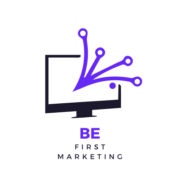In the dynamic world of digital technology, web development software stands as a beacon of innovation. It’s the backbone of the internet, powering everything from personal blogs to enterprise-level websites. This article delves into the fascinating realm of web development software, offering insights into its importance, functionality, and the latest trends.
Whether you’re a seasoned developer or a curious novice, understanding web development software is crucial. It’s the key that unlocks the potential of the web, transforming ideas into interactive and engaging digital experiences. So, let’s embark on this journey to explore the tools that shape the web, and perhaps, our digital future.
Web Development Software
Types of Web Development Software

Web development software comes in a variety of forms. Each carries a distinct function, enhancing the overall digital design experience. Creation-oriented software like Adobe Dreamweaver and Microsoft Expression Web allow developers to design, code, and manage websites in one place. Correspondingly, tools such as Atom and Sublime Text fall in the same category, offering more coding-concentrated functions.
Furthermore, one finds browser-based software, like WordPress, which empowers individual users to create personalized blogs or websites sans coding.
Importance in Modern Web Design
Modern web design can’t be imagined without the profound influence of web development software. It introduces design and functionality aspects that have now become integral to any online platform. For instance, responsive design, a characteristic feature of contemporary sites, owes its existence to these advanced tools. Here, software such as Bootstrap facilitates the creation of flexible, mobile-friendly layouts.
Additionally, these tools are capable of intricate coding paradigms. As a result, interactive elements see seamless integration in web designs. Consequently, the tools deliver an immersive user experience catering to the aesthetic as well as functional aspirations of the digital era.
Top Web Development Tools in 2023
Leading the innovation wave in the digital sphere, particular web development tools look set to dominate 2023. Staying abreast of these tools keeps developers competitive and at the forefront of technology.
Front-End Development Tools

Encompassing the functional design elements of websites, front-end development tools are crucial. In 2023, three such tools rise to prominence:
- Bootstrap, the open-source CSS framework, stands as a front-runner. It provides pre-designed templates implementing responsive designs – echoing its importance mentioned earlier.
- AngularJS, Google’s framework for building web applications, remains relevant. It offers developers robust tools for creating dynamic, single-page applications (SPAs).
- React, Facebook’s JavaScript library, makes interactive UI design simple, stressing the previously noted significance of interactive elements in modern web design.
Back-End Development Tools
Focusing on server-side operations, back-end development tools are essential for web app functionality. Specific tools gaining ground in 2023 are:
- Node.js, a server-side JavaScript framework, enables a unified JavaScript development stack. It bolsters the importance of server-side solutions such as Apache and Nginx, mentioned in the previous discussion.
- Django, a Python-based framework, integrates tools required for web application development under a single roof. It’s a favorite for developers who appreciate all-inclusive packages.
- PHP Laravel, a free, open-source PHP web framework, woos developers with tidy syntax and comprehensive features.
Full-Stack Development Frameworks

Applicable to both front-end and back-end, full-stack frameworks streamline the development process. The frameworks to watch out for in 2023 include:
- MEAN Stack, consisting of MongoDB, Express.js, AngularJS, and Node.js, provides a full JavaScript-based technology suite.
- MERN Stack, similar to MEAN, swaps out AngularJS for React. It reinforces the role React plays in modern web application development.
- Ruby on Rails, built with the Ruby language, is a versatile and beginner-friendly full-stack framework. Its simplicity and efficiency make it a strong contender.
These tools, across front-end, back-end, and full-stack development, reveal the direction of web development in 2023. Adaptability and proficiency in these tools enable developers to stay ahead in the evolving digital landscape.
Realm of Web Development Software
Web development software’s evolution is evident in the rise of tools enhancing efficiency, quality, and inclusiveness. Top tools like Bootstrap, AngularJS, and React are reshaping front-end development while Node.js, Django, and PHP Laravel are transforming back-end development. Full-stack frameworks such as MEAN Stack, MERN Stack, and Ruby on Rails continue to hold their ground.

